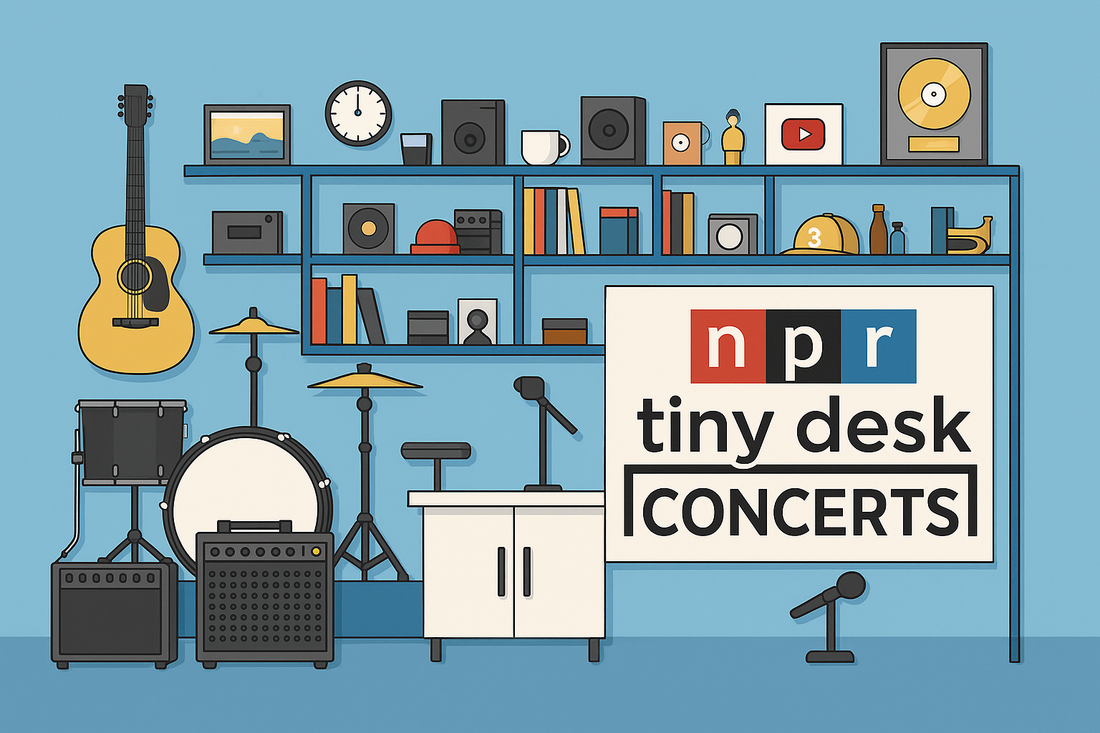
Share
Sound Journey: Discovering NPR Tiny Desk Concerts
Eclectic, intimate, and unfiltered — why these bite-sized performances are the perfect break from routine.
There’s a unique charm in watching the world’s biggest stars squeeze themselves between bookshelves and filing cabinets. Forget smoke machines and pyrotechnics — the stage at NPR’s Tiny Desk is little more than a desk (indeed, tiny), a couple of microphones, and an audience who could just as easily be waiting for their printouts to finish. And yet, this cramped corner in Washington has a magnetic pull that makes it one of the most enchanting performance spaces on the planet.
Maybe it’s the intimacy. Lizzo belting out gospel notes not three feet away from a bemused intern balancing their coffee. Anderson.Paak sweating over his drum kit like he’s at a basement jam, not a global broadcast. Even Taylor Swift traded her stadium thunder for a few quiet chords and a piano stool. At the Tiny Desk, the spectacle is stripped away, and what’s left is the music — naked, vulnerable, and oddly more powerful.
And the proof is in the standouts. The most popular performance of all time belongs to Dua Lipa, whose 2020 home-set has racked up over 130 million views. Stripped of pop choreography and flashing lights, her voice and presence carry the weight — reminding us why she’s a global star.
But Tiny Desk isn’t just about big names. Critics often point to the indie favourite Doechii, whose explosive performance turned a modest office into a stage alive with charisma and stagecraft. She moves effortlessly between rap, R&B, and high-energy theatrics, proving that discovery is as much a part of the series as familiarity.
Then there are the concerts that lean into cultural storytelling. Take Bad Bunny’s 2025 Tiny Desk, steeped in Puerto Rican roots. Surrounded by traditional instruments and national symbols, it was less a performance and more a cultural offering—a reminder that music doesn’t just entertain; it preserves and projects identity.
That’s the joy of dipping into the archive: one minute you’re watching Yo-Yo Ma’s bow whisper across Bach, the next you’re nodding along to a Malian kora player you didn’t know existed. Genres blur, reputations dissolve, and everyone, from megastar to unknown, looks a little awkward perched among the vinyl figurines and office plants. It's a celebration of diversity and a testament to the fact that great music knows no boundaries.
And maybe that’s the point. The Tiny Desk reminds us that music doesn’t need spectacle to move us. It requires honesty, a bit of imperfection, and sometimes a squeaky office chair. In a world where everything feels endlessly optimised — playlists tailored by algorithms, concerts engineered with hydraulics — there’s a quiet relief in watching an artist stand up, clear their throat, and play. It's a raw, unfiltered connection that's hard to find elsewhere.
So the next time you need a break from your own desk, swap your spreadsheets for the Tiny one. Start with Dua Lipa, then wander through Doechii, and don’t miss Bad Bunny. You might discover your next favourite band, or at the very least, remember why we bother with music in the first place: because in its purest form, it connects.
